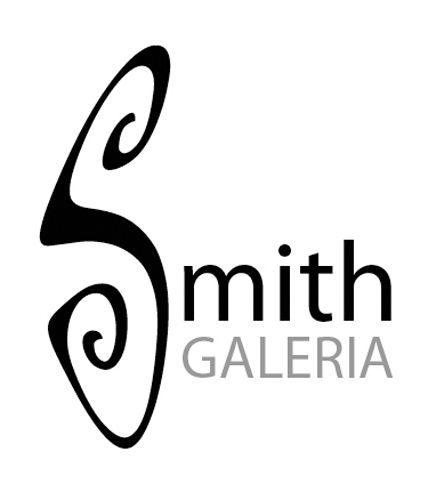COLETIVO DUAS MARIAS | Forged by Time
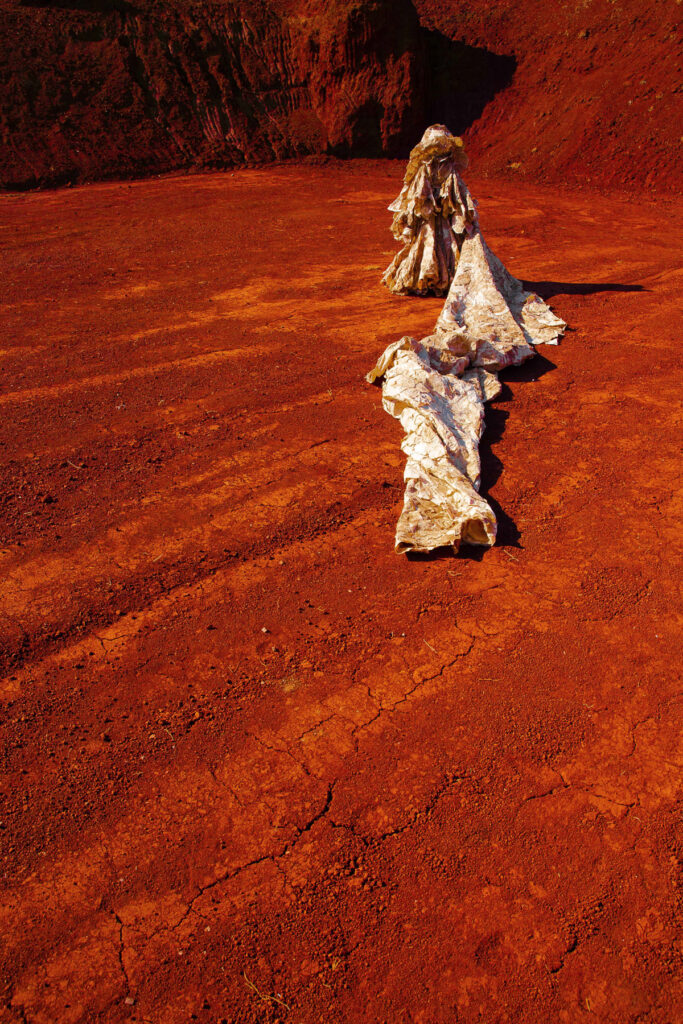
The human being is no longer the one for whom day and night alternate or for whom proximity and distance are measured. <All that unites people and portrays itself in a common depth that nourishes the roots of all that grows> (R.M. Rilke). In these words there is the intuition of a being that shows itself to our eyes through the body or who knows how to call it the “human landscape”, the essence of nature. A primordiality and essentiality of the human soul only external, but more strongly internal, in which the consciousness of our relationship to reality was felt first and oppressed from within and without. Thus, we seek in ourselves the urgency to show a deep state of passion and senses, happiness and torment. Like stairs on which the parable of our existence on this earth is completely fulfilled and consumed. Is it not true that the greatest and most unique aspect of art resides in being the medium in which human figures and landscape, world and form meet and re-encounter? In reality, they, side by side, almost ignoring each other, and in a painting, in a building, in a symphony, in a word, in art they seem to unite, so to speak, in a higher truth than the essence of the work reveals.
And this is the thread that unites the artistic research of the Duas Marias Collective, composed by Nani Nogara and Malu Rebelato and highlighted in the works of the exhibition “Forged by Time” in which part of the female universe is told. But not beauty is understood as what we are used to seeing in glossy magazines. And not even as an opposition to men, but as an expression of the new dialectical position of women in the context of contemporary culture. But his world is full of strong nuances and stimuli, as variable and changeable as in a kaleidoscope: an abyss of feelings where the tensions of symbol and reality, nature and civilization mingle.
The Duas Marias Collective, by using photography, installations, and videos, crosses female stories, showing the representation of the contemporary human condition, between the natural dimension of time that passes, and the identity that seeks to free itself, engaging in the search for seduction and sensuality. With a series of images that are evidently narratives, the artists build their syllabary that becomes more coherent and more adequate each day, including in its aesthetic composition. His performances approach the theme of the body as a place of introspection, capable of arousing several interesting questions. Played between action and passion, in a journey between the layers and rooms of a person’s essence, the works immediately question the possibility of reaching the soul through the representation of the body, as if it knew and expressed its most intimate secrets. Isolated people, but not always, are placed in a background that often gives the sensation of a vortex that devours the body as if it were apparently inanimate trinkets. Precisely because of their presence, they tell us that they exist and that they continue their advance into tomorrow, all expressions of a shared everyday life. The two artists take on the task of digging up the outside of the body to steal the fleeting truths of the soul, even when they only show the dress, in a concept in which the truth is always intuitive, affective, and emotional. In them, the object portrayed and the subject who portrays it are not indifferent to each other, but reciprocally involve each other.
This gives rise to the artist’s nostalgia, for wanting to remain with his intimate feeling in that world, betraying the false glow created with his dreamy gaze. It is the very physicality of the visual work that delimits time and space, that is, infinity. An infinity that the artist reserves the right to use as a sign of hope for a world where fantasy is the only happy island where to take refuge. The pure creative impulse that elaborates a transfigured vision of reality, never static and never predictable.
Massimo Scaringella
EVANDRO ANGERAMI | The World Behind the World
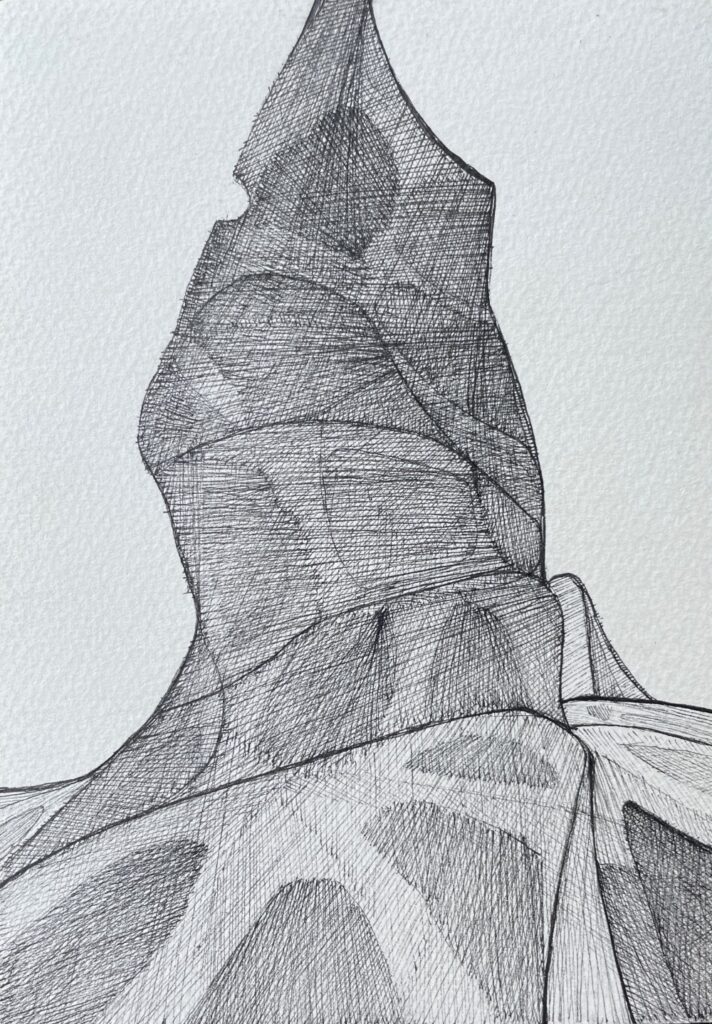
Smith Galeria is pleased to host the solo exhibition entitled “The World Behind the World” by Brazilian artist Angerami, which will be online from November 16th to December 16th. Like many interdisciplinary artists, Angerami explores drawing to plan his thoughts and later transpose them to his chosen medium. However, this time he uses this technique to understand and support reality as a purpose and an end. The drawings are free of narrative sequence; their delicate lines depict hybrid scenarios between figures and abstraction constructed on paper to be mentally deconstructed by their observer, seeking an emotional response. The text below explains:
“I seek to contemplate the sublime, the sacred of the natural world, as an immense and beautiful ancestral home. Thus, I propose a reflection on nature in a spiritual, aesthetic, and existential relationship.
I understand drawing as an extension of thought. It materializes ideas and perceptions and organizes the structural elements within the pictorial plan. Ultimately it is also the act of touching the intangible. Each line is a journey with a beginning, a middle, and an end. The happenings of each journey, together, build the idea of landscape. The series of drawings “The world behind the world” (2022) depicts landscapes where the bodies that comprise it present ambiguities between their multiple recognizable or susceptible meanings. Duality invites the viewer to enter the composition from imagination. The choices of shapes and textures activate elements of subjectivity, creating unique experiences, whether in the material or spiritual world. From these two matters, I am interested in exploring what is necessary for these events to occur simultaneously. Art can be a way to do that.”
Angerami, with the collaboration of Augusto Leal.
PICO GARCEZ | Where are you Now? Epecuén
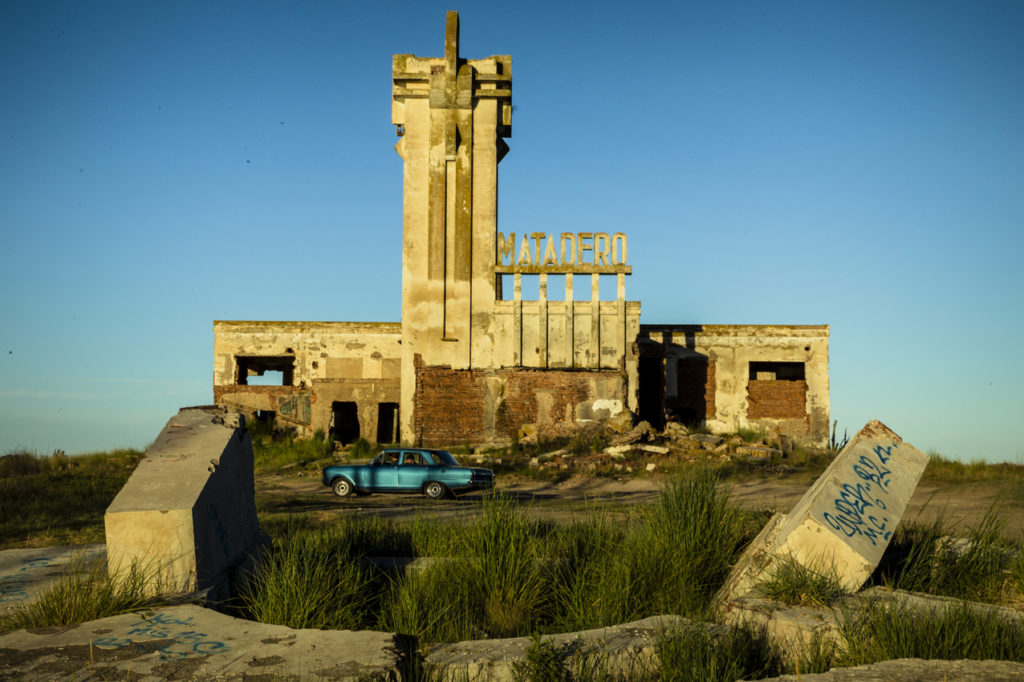
Smith Galeria expresses its thanks to Professor Claudio Feijó, who kindly authorised the usage and translation of the text displayed below:
Photographic work like watercolour that creates visual quietness
Treating the repetition of silence with coherence, inviting the spectator to feel inner peace and experience the everlasting void
Whispers…
Contemplation of minimalism in each image
Boldly without formulas
Dense and smooth, delicate work that stirs our dynamics and
stitching together the observation, one dose at a time
Invite you to see for yourself…
Claudio Feijó – Photographer, professor and researcher
SHEILA ORTEGA | Domesticados
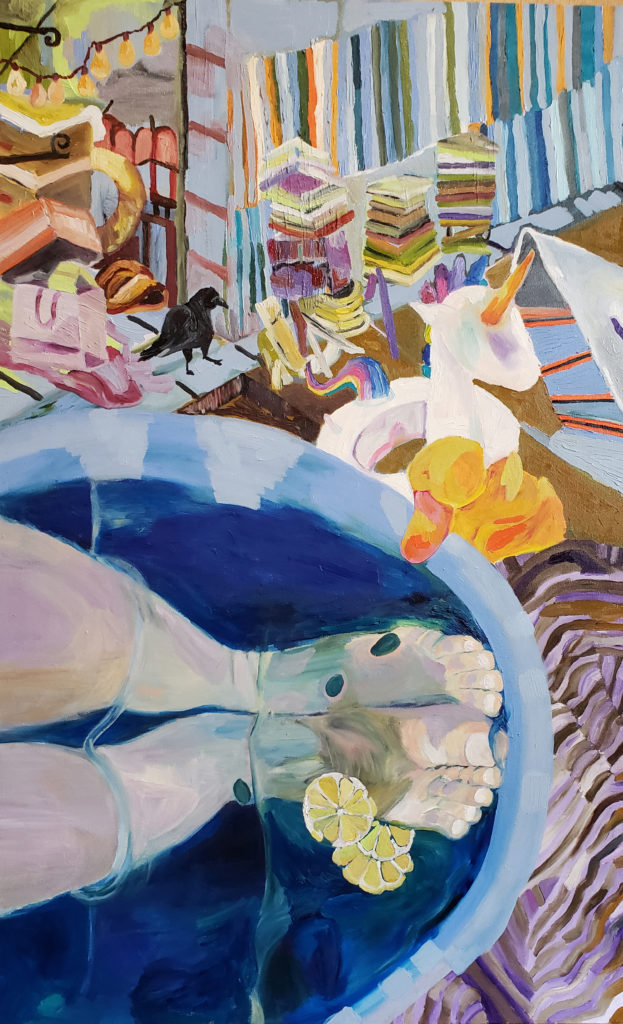
There is an innate order to Sheila Ortega’s poetic chaos. What appears to the eyes as a mismatch in everyday life resulting from the accumulation of objects, things and stories that seem to want, at any moment, to fall apart is actually the expression of the artist’s desire to prevent chaos from occurring. In front of her installations, the spectator is invited and, at the same time, prevented from acting on what the artist meticulously balances in her multiplicity of objects.
Sheila Ortega is a tightrope walker traversing chaos who substitutes the possibility of realizing desires with a sense of possession. Her work finds meaning in objects displaced from their usual surroundings and day-to-day functions. The artist routinely appropriates the objects of her daily life, conditioning the spectator’s gaze to this banality in a different mode. Sheila Ortega makes the viewer look again – in a different way – at the world and daily life, and she does it as a teacher who transits between different techniques, supports and languages without losing the guiding thread of her poetry.
Her paintings of everyday situations manifest the overflow of this accumulation, this excess, these ordinary scenes. As a great observer, she structures her “domestic landscapes” amid the conflict and confrontation of objects that overlap and bring harmony to the composition in some unexplained way. The artist’s paintings and photographs warn of an imminent danger of destruction and disturbance. Everything else will be implicated in a ripple effect if something moves out of place.
This reminder of the ruin in Sheila Ortega’s visual poetry refers to a warning about the human condition itself in its relationships, affections and contacts, the risk of encounter and collapse, and the risk of actions and reactions. The artist seems aware of this process, hence the impossibility of acting on this chaotic balance, hence the impediment of action.
Lucas Benatti (Art critic, teacher, and researcher)
VIRGÍLIO NEVES | Unmatrix
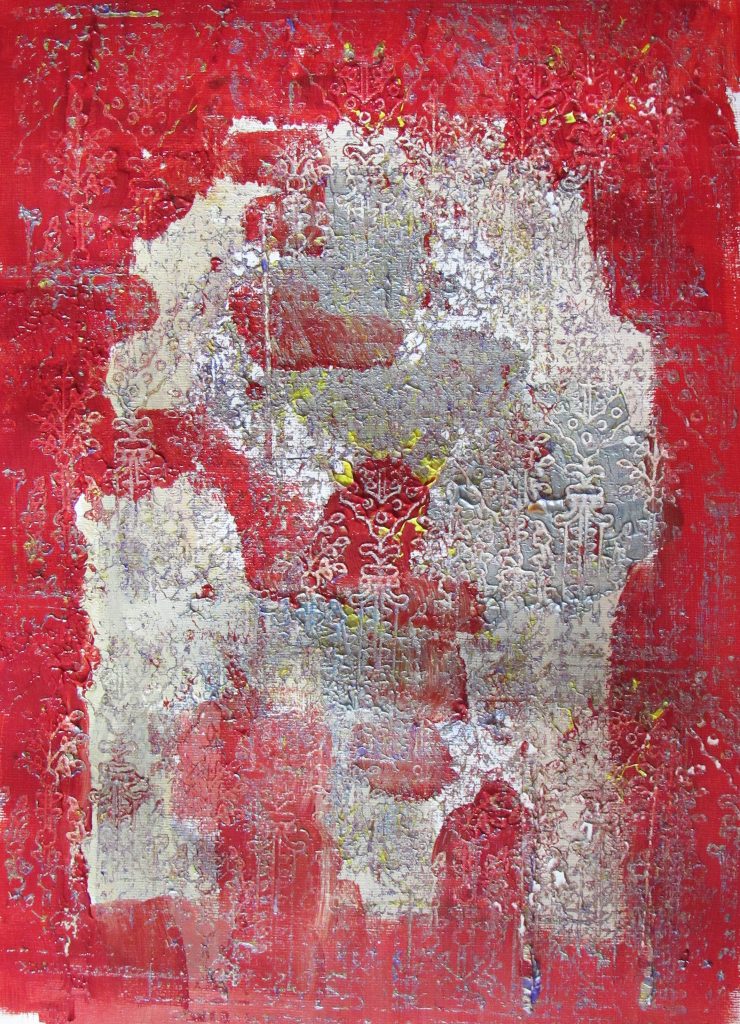
The series “Unmatrix” assumes that the printed copy obtained from a matrix is almost always the result of a thorough and precise process. When researching old printing techniques, I found some Block Printing stamps, a technique ancient Chinese and Indian cultures used to compose decorative prints on fabrics. It was with them that I advanced in my research to try to get the opposite: unique images, which no longer mirror the matrix and could contain only a few traces of it, in a kind of approximation between drawing and painting.
The compositions call for careful and close visual reading to capture these traces and the message that builds from them: “Unmatrix” makes us think about archetypes that need to be revised, rethought and transformed in all we. Both in art and life.
Virgílio Neves, 2021
EDU VERENGUEL | Unnumbered Days
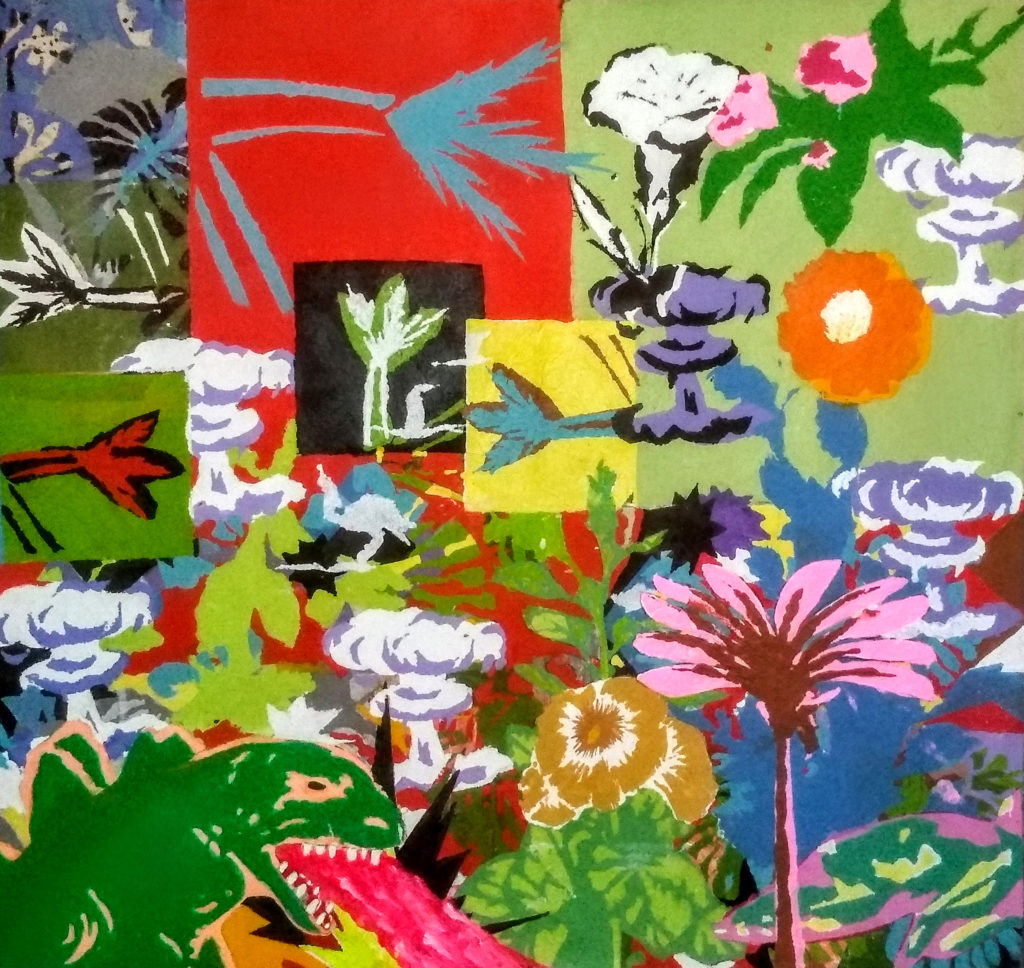
Born in a small Brazilian town with many Japanese immigrants, Edu Verenguel has been largely influenced by its rich iconography. Allegories that are prevalent in that culture, of disenchantment, of illusion, of impermanence expressed by catastrophe and tragedy, creating all manner of confusion, calamities and commotions are present in his works: chaos and primal sensations of solitude and isolation pulsate, reminding us of human beings and their home (our Planet), and of its interaction with its surroundings and with all living beings, of action and reaction, and of the melancholy that is intrinsic to the species in its uncertain walk to a stormy future from this shaky present.
“There are decades where nothing happens, and there are weeks where decades happen”. (Vladimir Lenin)
“Turn on, tune in, drop out”. (Timothy Leary)
In this process, the transposition to the support accentuates imperfections and corrections that the artist makes a point of displaying, which are materialised in typical images represented by an almost-absent finishing and refinement, leading to an initial strangeness and creating discomfort to the observer. This technical and resourceful peculiarity emphasises Edu Verenguel´s creative/poetic coherence. His work is uniquely and curiously magnetic, responsive to memories that persist in the collective psyche, while also disclosing the unconventional.
Anne Smith in collaboration with Edu Verenguel, 2021
FATIMA TOSCA | João, Chicas e Jocas, Todos que Chegarem
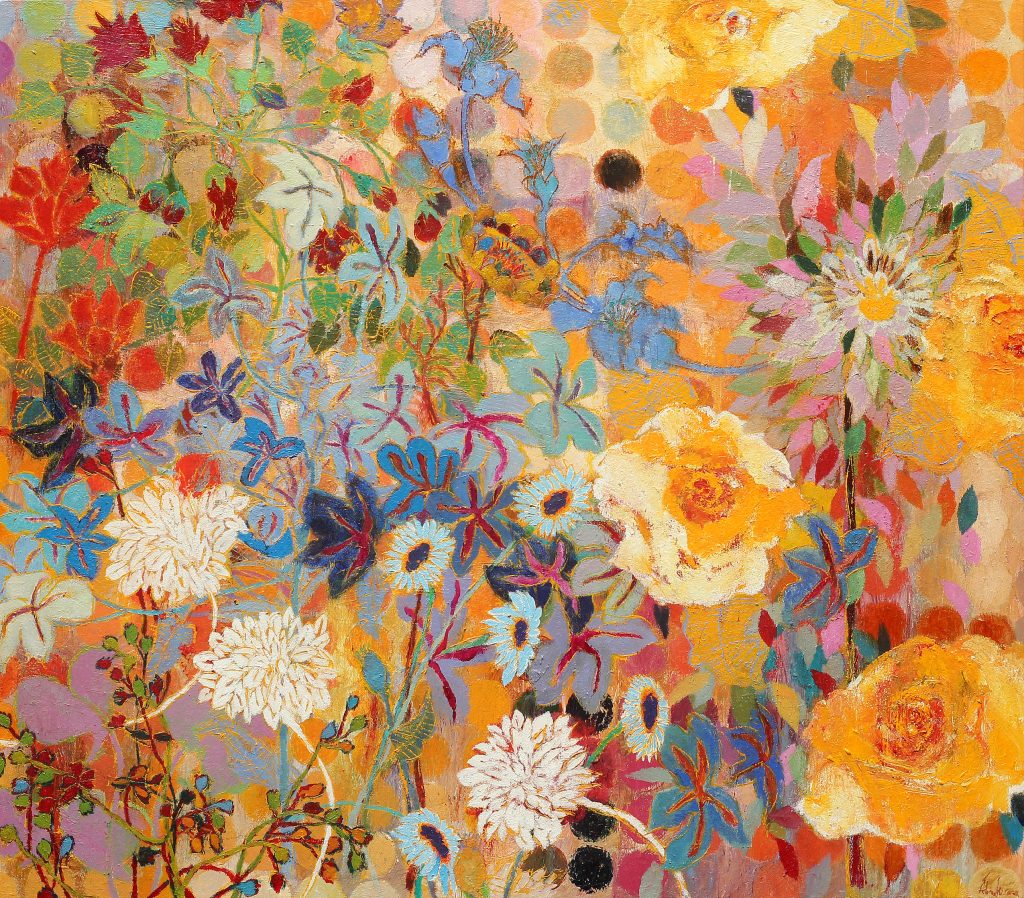
Some say that painting no longer has the status that it enjoyed in the past and that it has been substituted by other techniques that are more advanced and convenient for the expression of modernity. Technological advances open up possibilities hitherto unimagined for the representation of contemporary art and culture, which in fact contributed to the gradual abandonment of the painting as the principal medium of artistic manifestation. It is hardly taught anymore in art schools: students have study materials in front of them that more closely resemble philosophy. Perhaps because of this, when we encounter works from a painter of essence such as Fatima Tosca, apart from the surprise and immediate fascination, some questions arise: can painting today as a cultural device manages to encompass all of the complexity of modern life? Can it provide questions and their appropriate answers, reflecting the thoughts and concerns of one facing life as it is today?
We examine the subject in the paintings of Fatima Tosca: the argument that a work of art, whatever may be the technique employed, uncovers all of the personal questioning of the artist, like a manifest of her subconsciousness. So we see fragments of the circus, of nature, of the feminine: characters almost melancholic and lonely bathed in light and colour floating before us: dreamlike reminiscences of symbolic figures. Despite seeming casual and disparate, these elements are joined to the idea of equilibrium through the conflict of opposing forces, of harmony arduously obtained by sacrifice. The nostalgic dance of the images refers to the “carnival of life” to the everyday strenuous but fantastic battle of the human condition.
Other signs of the action of the opposing principles that are in conflict are the processes of painting itself: the “impasto” used in the majority of her works is an aggregate of oils and acrylics, substances that are chemically immiscible that magically become stable under her determination. White, her signature colour, carries a unique and intense luminosity, and one can almost see in it all the shades of the palette. With disconcerting assuredness, Fatima sets colour against colour with her strong brush strokes, transforming density into an original fluidity.
From whichever point of analysis, the consistent and robust production of Fatima Tosca is marked by a high degree of identity. Seducing not only by the refined beauty and poetic repertoire; but also by yielding an imponderable and precious quality, disguised by the apparent absence of critical concept; that subtle and provocative subjectivity, answering those earlier questions, because much more than contemporary, her work will always be relevant to the present.
Anne Smith
FINOK | Despacho
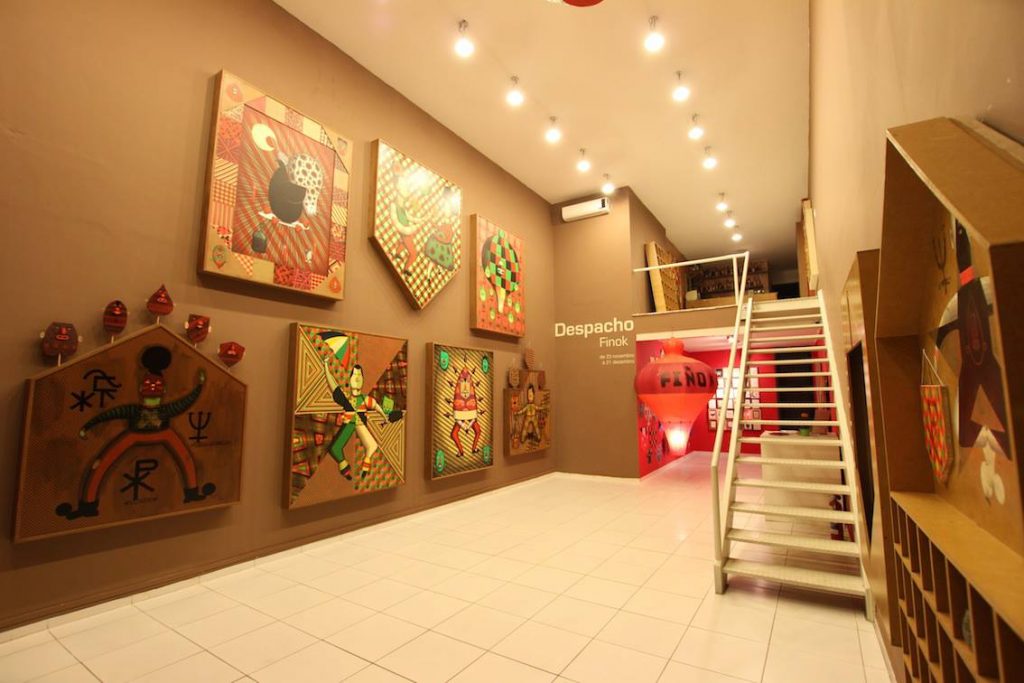
Using the principle of popular imagery related to Brazilian beliefs, Finok presents a profound look at the perplexity that the boy from the suburbs suffers in discovering the wiles of the world. Later, as an adult, his wisdom and spirituality lead him to protect himself. Despacho (“Order”), Voodoo, Saravá, Ebó . Words of a religious nature that name some of the manifestations derived from the rich Brazilian popular culture Labelled profane by other religious groups, these practices have consolidated themselves into the population which takes refuge in them against the malign intervention of others, under the protection of the deities called Orixás. Religious considerations aside, what makes a graffiti artist research these beliefs and make them the subject of his poetry? Finok answers the question with a vigorous and mature artistic production, bringing to the entire work an authentic significance based on his own experiences.
Comprising explicit or subjective symbolism, containing the perception of hidden threats and consequent guileful intuition of others, a good example is the kite shape, repeated in several works, which simply echoes one of the first disappointments experienced in life: “The glass impregnated wax of my friend’s kite cut the line that held my own … “
Graffiti sustains the proposal, as it is a technique of free creation. However, Finok goes deeper by adding elements whose composition demands absolute domination of the method. Through the figures in the foreground, there is a focus on formal happening, the ritual action. The geometric field, sometimes rhythmic and difficult to execute, suggests permanent physical and spiritual struggles in their cutouts and interruptions. The Mediterranean palette of some works, or the same palette subsequently reduced by overlapping layers of bituminous paint of other works, offers a restless interpretation from its tonal contrasts. The scepticism, the uncertainty and the subsequent spiritual balance derived from such processes – are not easily distinguished in the images, but their strength is clearly perceived. The result is an anarchic joyfulness linked to ordination and enchantment as only great works of art provide.
Anne Smith
COLETIVO OFICINA DA LUZ | Ao Largo
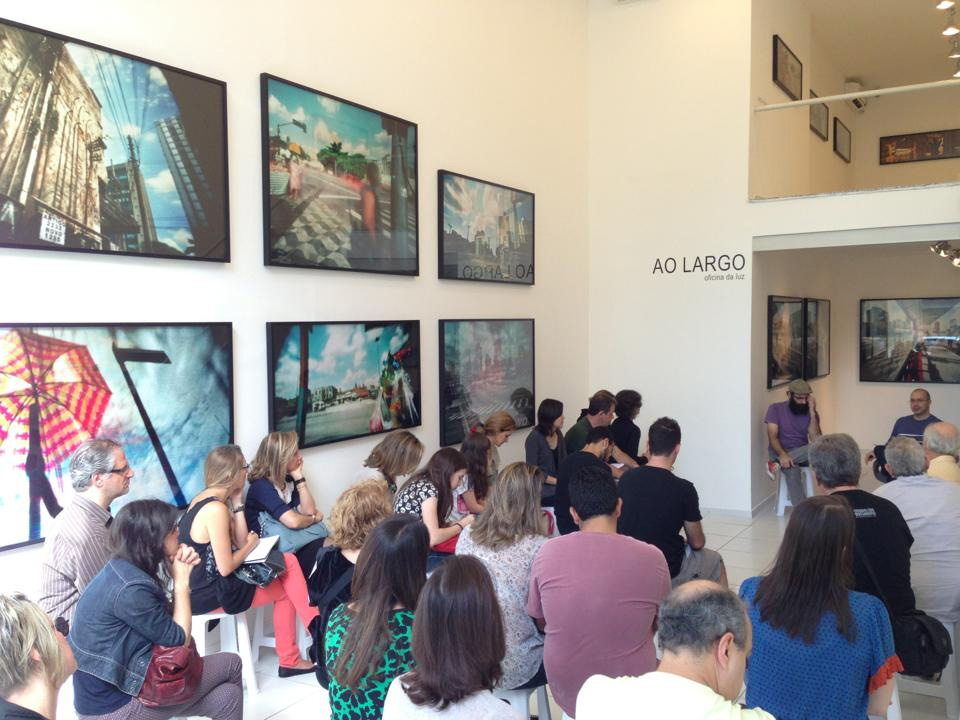
Coletivo Oficina da Luz presents its project “Luz do Largo” at Smith Gallery, a poetic documentation of the daily life of Largo da Batata, in the Pinheiros neighbourhood, in São Paulo, Brazil.
The exhibition consists of two series and an installation: the Vista do Largo series presents images developed with pin-hole cameras, built from matchboxes and using 35mm film. Through the overlapping and interference in the film, the surrounding space is transformed, allowing a playful and poetic vision of the photographed area.
In the series Largo do Progresso, Coletivo dialogues with the moment of transformation of Largo da Batata, creating a different relationship between different places and times. The image that is built represents an imaginary landscape, where different environments are subjectively mixed.
The installation of Jardim Invertido proposes an experience of immersion in the image formation process, transforming the space into a giant camera obscura.
CLAUDIO MATSUNO, CHRIS MORAES E JUNIOR SUCI | Habeas Corpus
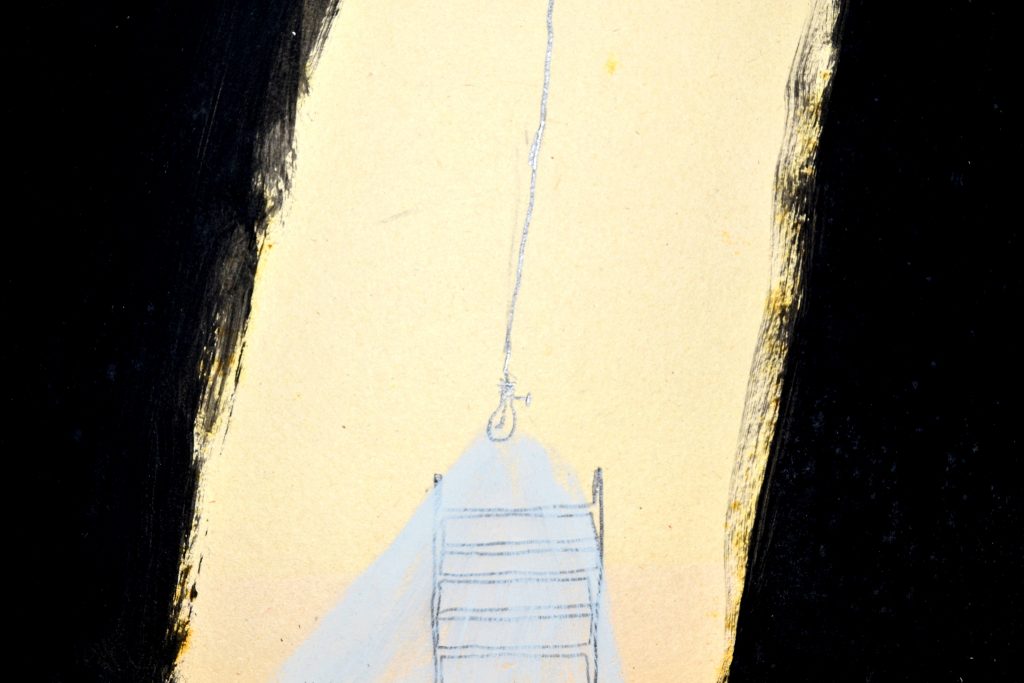
Idealized by the artists, the exhibition invites the viewer to reflect on the possibilities of contemporary drawing.
The exhibition we are now presenting is the result of a desire that has been cherished for some time but retains the freshness of the ideas that, like those that govern our artistic process, are built-in making. In this sense, HABEAS CORPUS is both the result and the space we create for future reflections; for us, it is an extraversion of our work and a manifestation of a possibility – a need – also to articulate ourselves as curators of our research. We want to believe that this exhibition, hosted by Smith Galeria, is the first of a series of others in which, together, we will think about drawing.
The exhibition’s title refers both to its semantic conception, which means “have a body, ” and the legal term that refers to infringed freedom. The three of us practice drawing as an autonomous language, which is design rather than a project. We have in common to think of drawing as an end and not as a means and without preparatory sketches, which manifests itself in safe and erratic lines, being, what can be seen, the result of a process where the gesture and chance derived from it in confrontation with the support are assumed as indissociable marks of the constituted image. It is possible to suppose the actions that generate the traits presented: one has a body – a body that draws and makes itself noticed in its tracks. On the other hand, the legal term has been decontextualized, not without irony, as we claim the right to the freedom to draw and to assume ourselves as designers, considering, therefore, how marginal this attitude is and, from a particular perspective, considered retrograde. Drawing indeed has a guaranteed space in contemporary art – again growing, it should be noted, probably due to its manual character in opposition to the fatigue generated by electronic and digital media – as far as we know, when we evoke a traditional artistic language, we assume a posture that goes against fads that disregard the history of this eminently human doing. We are not against the idea of ”expanded drawing”; even some of our projects can be included in this concept. However, we also want to have space to reflect on contemporary drawings as lines derived from the deposition of matter on a surface. We dare to say that few theorists active in the Brazilian scene can approach drawing beyond the understanding of the image generated by it. For us, the language of drawing and what results from it are inseparable and equally essential facts.
I will not stick here to considerations about our works’ subjects or concepts beyond those about drawing. I think that either the images show what we are dealing with or failed to achieve their intentions.
Chris Moraes
GROUP EXHIBITION | Dois Tempos
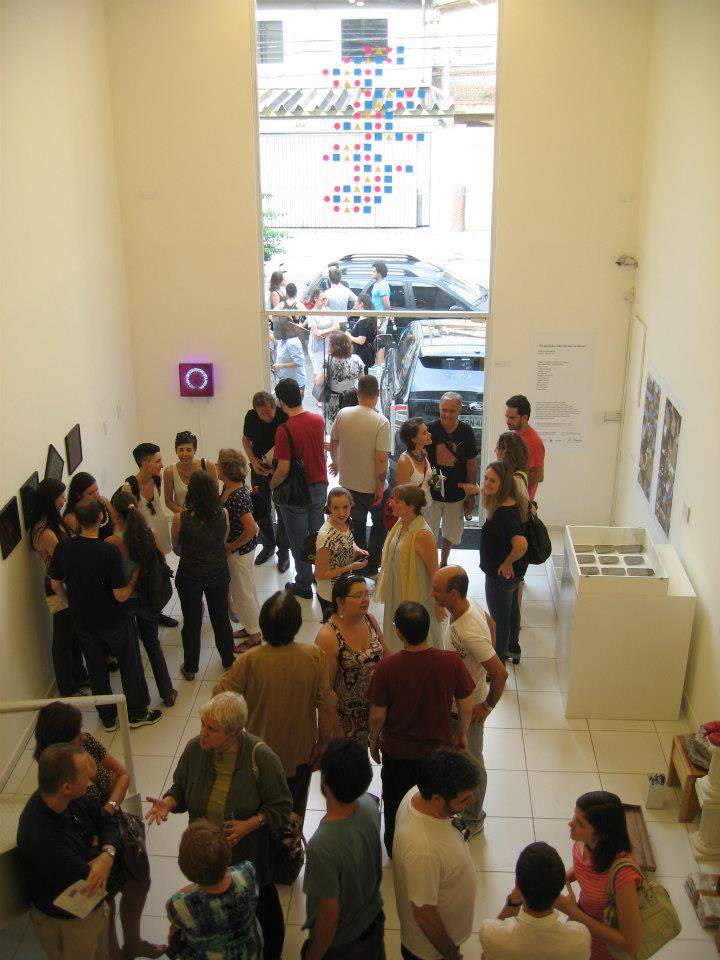
1. fiction/construction
Curated by Inês Raphaelian, exhibition 1. fiction/construction is the first part of the Dois Tempo project. In the exhibition, eleven artists present works that are interconnected within two nuclei, fiction and construction. Here, Inês’ poetic work was the starting point for selecting other works, which were “catalogued” within recognized lines in her artistic production.
1.1 Fiction: fictional anthropology, archaeology and science: Fiction serves as a binder to classify a group of works that contain scientific references, even if nothing has scientific validity and integrity. Edu Verenguel, Inês Raphaelian and Rodolfo Borbel Pitarello investigate what we can call archaeology of the present or the future. It may seem a strange term since archaeology designates the study of the past through fragments, but archaeology’s methods and means, such as classification and cataloguing, serve artists in the production of works. Lídia Malynowskyj and Renato Pera, each in their way, build images of a world seen through satellite and microscope lenses. Lídia’s are physically constructed, objects produced by the artist and natural environments are transformed into microscopic pictures or images of lunar surfaces. In Renato’s work, the macro and the immeasurable serve as a reference for creating digital images of cosmic events and objects. The works of Celina Yamauchi and Marucia Crusco are contextualized in the exhibition as images of pioneering expeditions. Here, Marucia’s photographs take on the character of an anthropological expedition, and Celina’s appear as an investigation of an unknown landscape, which carries within itself the strangeness of a lunar image due to the lack of inversion of tones in the negative.
1.2 Construction: modern architecture and the Brazilian concrete tradition. In this second nucleus, Daniel Nogueira, Daniel Scandurra, and Diego Castro present works in which the influence of concrete art finds breath in a possible relationship with the city. Thus, in the works of Daniel Nogueira and Diego Castro, geometric structures are articulated with urban patterns and references. Scandurra’s work starts from the principles of concrete poetry but unfolds on the city, space and architecture, so much so that the city is often the support for the work. Architecture is also a starting point for Ana Friedman, who presents a large image composed of photographs of fragments of modern architecture. These clippings are organized, creating repeated patterns in rhythm, like that of concrete poetry itself, starting a sizeable graphic stain.
* * * Using the very principle of cataloguing that drives the exhibition, all works can be united under the term construction; after all, fiction is also the articulation of ideas to give meaning and arguments to something that is not real. But, ultimately, everything around us is constructed, whether by materials, ideas or atoms, and if everything is built, it doesn’t seem efficient to use this rubric to catalogue anything. So all that remains is to reclassify the world under new categories so that artists can subsequently subvert them. In time: the second exhibition of the project will be curated by Christine Mello, and scheduled to open on November 30th.
Douglas de Freitas
